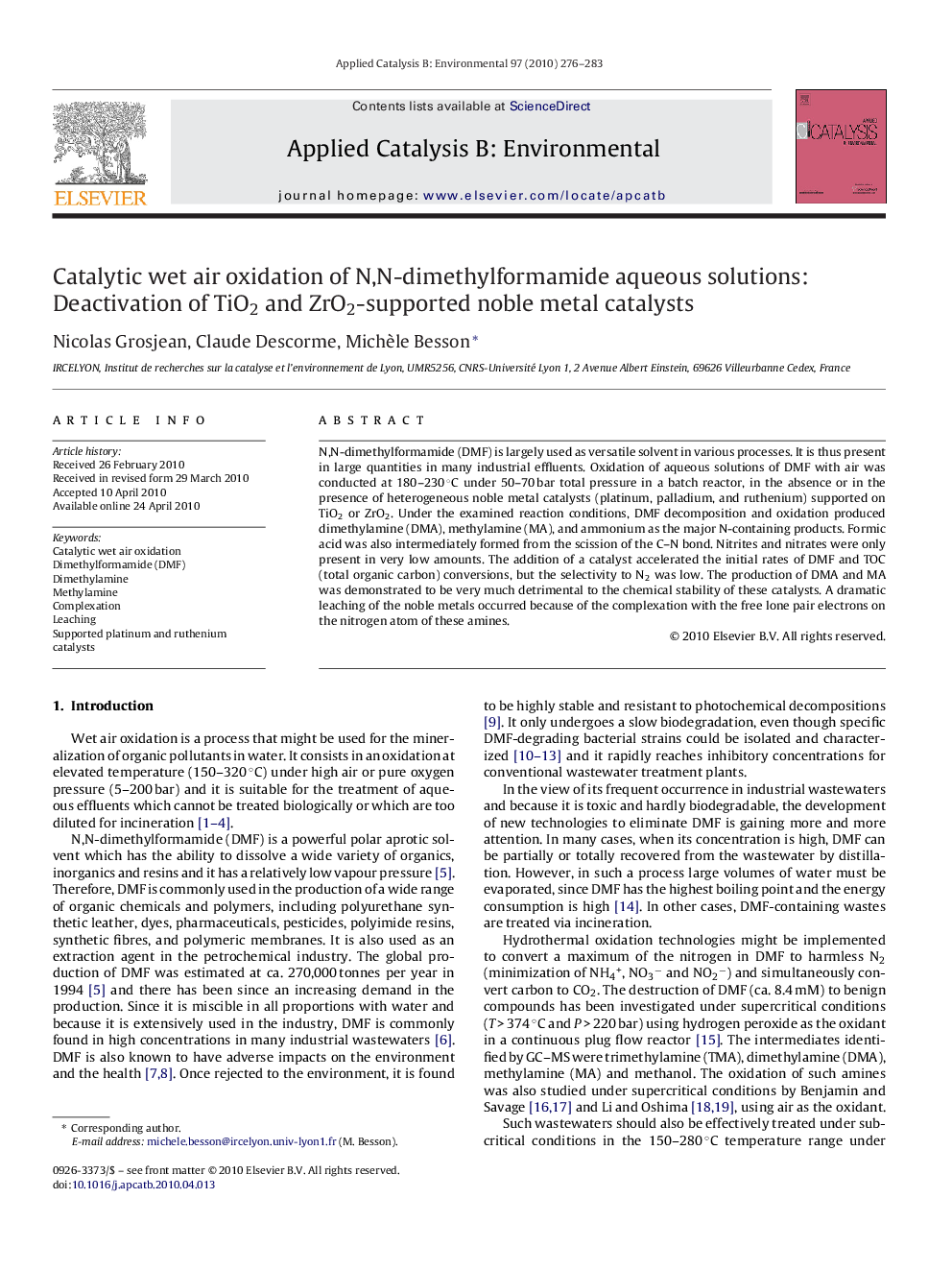| Article ID | Journal | Published Year | Pages | File Type |
|---|---|---|---|---|
| 47304 | Applied Catalysis B: Environmental | 2010 | 8 Pages |
N,N-dimethylformamide (DMF) is largely used as versatile solvent in various processes. It is thus present in large quantities in many industrial effluents. Oxidation of aqueous solutions of DMF with air was conducted at 180–230 °C under 50–70 bar total pressure in a batch reactor, in the absence or in the presence of heterogeneous noble metal catalysts (platinum, palladium, and ruthenium) supported on TiO2 or ZrO2. Under the examined reaction conditions, DMF decomposition and oxidation produced dimethylamine (DMA), methylamine (MA), and ammonium as the major N-containing products. Formic acid was also intermediately formed from the scission of the C–N bond. Nitrites and nitrates were only present in very low amounts. The addition of a catalyst accelerated the initial rates of DMF and TOC (total organic carbon) conversions, but the selectivity to N2 was low. The production of DMA and MA was demonstrated to be very much detrimental to the chemical stability of these catalysts. A dramatic leaching of the noble metals occurred because of the complexation with the free lone pair electrons on the nitrogen atom of these amines.
